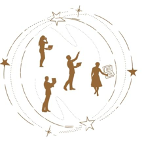Jul 26, 2023
Empower People to be the Stars of Diligence
Culture & People

Technology does not perform diligence. People perform diligence. Does your organization recognize people as the stars of diligence?

People are the stars
Your people are the stars of diligence.
Why?
Because your people perform the diligence. Software, computers, mobile devices, the internet, even artificial intelligence (at this point) are tools of diligence. Useful and efficient tools that assist people in doing the important work. Assist is the key word; technology does not perform diligence. People perform diligence.
This may seem obvious but with the rapid advances in technology, especially artificial intelligence, it is easy to lose site of the value of people.
People play unique roles in the performance of diligence. People bring the:
- ethics
- creativity and
- principles
that govern a diligence project. People define the project, set the parameters and apply their own experiences and insights to research, analysis and conclusions. Ultimately, people make the decisions and choices that flow from diligence and people are responsible for the outcomes.

Who are your people?
To answer this question, think broadly. The most remote person that touches the business or the organization may impact your diligence, consider for example the clerk that spots an error in a money transfer order, the customer that discovers a problem with a product or the user that identifies a security flaw in your software.
I think that a useful way to identify these people is to visualize them in a series of concentric circles. The people in the middle have the most responsibility and direct involvement with the organization’s diligence. As you move out from the middle different people have different abilities to participate in diligence. But no matter how far out they are from the organization you can’t discount the role that they play because you can’t predict who will perform a diligence task that saves you from disaster.
Look at this simple visualization. It is an example that I came up with to help me answer the question – who are your people?
Your visualization will be different because it will be based on your organization, industry and your own compliance/legal requirements but I think you get the idea. This is a way to think about the people that impact your diligence and the connections between them and your organization.

Customers/Clients, Users, Influencers – Depending on your type of organization, you may not even know the names of these people. But these people market for you, buy from you and with the rise of social media engagement deeply interact with your organization. They can tell you when a product doesn’t work, a technology is flawed or if your reputation is at risk. If you listen, these people not only keep your organization in business but they provide an early warning system for problems.
Vendors, Suppliers, Manufacturers, Servicers – these is your supply chain. These days, depending on your mission, regulatory requirements and ethical choices, your supply chain operates as extra eyes and ears helping you avoid fraud, corruption, money laundering, unethical labor practices, war/terrorist funding and other potential problems. They can perform diligence on issues and entities that you may not even know exist.
Lawyers, Accountants, Consultants, IT & Security Experts & Advisors – these people have internal information about your organization. You pay them to perform diligence or to provide you with expert perspective. That perspective allows them to see issues that may be hiding in plain site or deeply buried. They see the gaps that are invisible to you. They are also the people that you turn to for help when there is a diligence issue or a failure of diligence.
Owners, Employees, Contractors – these are examples of the people closest to the organization. They know the organization best. These are the people that perform the day to day diligence that keeps the business, finance and compliance on track. These are the people that educate and supervise the people that come in contact with the organization. And these are the people that have primary responsibility for the success or failure of your diligence projects.

What does this all mean?
This means that it is vital that the organization recognizes the way in which different groups of people have a meaningful impact on diligence. But recognition is only the start. If you want all of these people performing diligence on your behalf you need to:
- Identify who these people are and where they are located in the widening rings around the organization. Make your own chart or map to help you.
- Understand the roles and opportunities presented by each group.
- Educate and empowering them to work with you on your diligence needs.
- Recognize, respect and reward the work they do for the organization.
In other words, treat your people as the most important driver of diligence, treat them as the stars. When you do this, when you align your diligence principles, expectations, and behaviors to support diligent people in performing diligence work, you are creating a culture of diligence.
This takes you to one of the four basic elements of the Diligence Framework – to have a diligent organization you must have diligent people and a culture that recognizes, promotes and requires diligence.



Subscribe for Diligence Updates
Get the latest updates, resources, offers, and more.
"*" indicates required fields
The Diligence File respects your privacy. Privacy Policy